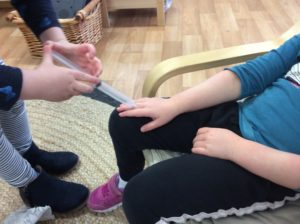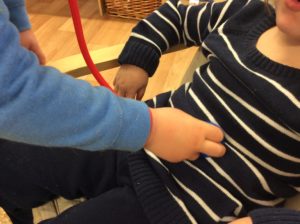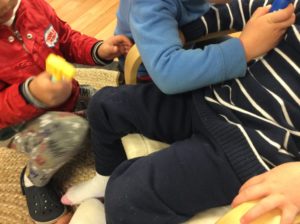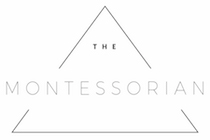I’ve had many discussions with people over the years regarding Montessori’s views on imagination. These views (and various interpretations or misinterpretations of her views) have been controversial for some years. Grazzini (1979) declared that to understand her position, first one must ascertain the age of the child. Consequently, the developmental needs and sensitive periods of the child at different ages will alter how imagination is used:
The young child or infant of the first stage of development must build reproductive imagination, as part of his creation of the self, through the experience of his immediate environment; whilst the older child of the second stage of development uses a creative imagination, which is based on reality, in order to psychologically conquer the world. (Grazzini, 1979, p. 33)

In the past, Montessori criticised some uses of imagination because they drew people further and further from reality in a way that caused negative effects on the person’s life. Montessori was critical of the reliance on imagination in the sense of fantasy, where the person becomes completely lost in the fantasy and disconnected from reality (Grazzini, 1979). She was concerned that society was becoming too dependent on imagination as a way of escaping from reality. That because of this, children would limit their creative imagination from all its possible uses, to the detriment of learning and knowledge (Grazzini, 1979). It could be said that her concerns are evident in our current society’s reliance on computer games and escapist fantasies. However, as long as the child is able to differentiate fantasy from reality, there are no limits to what their creative imagination can accomplish. Furthermore, this is the understanding of imagination that is linked to Montessori most frequently, as a blanket view without considering her other statements or discussions on the topic.
Below is an excerpt from Montessori’s book The Absorbent Mind:
The mind of the child between 3 and 6 years fixes not only the functions of the intelligence in relation with objects, but also those of imagination and intuition. This means that the intelligence must not have a great and vivid power at this age beyond that of merely absorbing through the senses. It has a higher, power, that of imagination, which enables the individual to ‘see’ things he cannot see. This may seem an exaggeration in relation to children of this age, but if we think about it, we realise it is not such an exaggeration, since psychology has always said that this is a period of imagination. Even the most ignorant people tell their children fairy tales, and they love them immensely, as if they were anxious to use this great power of imagination. They call a table a house, a chair a horse, etc. Everyone realises that the child likes to imagine, but he is given toys as the only help. If the child can realise a fairy and visualise fairyland, it is not difficult for him to visualise America, etc. Instead of only hearing vaguely about America, a globe with the general shape of America is a concrete help to his imagination. Imagination is endeavouring to find the truth of things, a fact which is often forgotten. If in the child’s environment the word ‘America’ or ‘World’ had never been mentioned by anyone, then it might be difficult for him to show interest in it, but since he hears the word so often, it enters his mind and he clothes it with imagination. The mind is not the passive entity one imagines, the mind of man is a flame, an all-devouring flame, it is never still, but always active.


So, with this in mind, let us consider that one of the ways that children learn is through imitation. You may have seen a quote floating around the internet from Montessori about it:
Imitation is the first instinct of the awakening mind.
As children grow and develop, role playing or dramatic play is often based around children imitating the adults they have seen around them. This helps them to process and interpret interactions and actions that they have seen. For example, in my class at the moment, everyone is fascinated with doctor and nurse role playing, as last term we were learning a lot about the human body. They are now transferring that knowledge about the body to their role play. You will see the children that are the medical professionals asking questions and checking those that are the patients, describing symptoms and cures of certain body parts, and standing on either side of a ‘counter’ to make the payments. From these questions and actions we can clearly see that the children are imitating what they have seen done at the doctor’s surgery. Therefore, these children are using their imaginations and creativity in their role playing to utilise their knowledge and extend their learning in constructive ways. If I ask them if they are actually a doctor in real life they are able to tell me that ‘no, we’re just pretending!’ Clearly, these children are not relying on their imaginations or convincing themselves that these imaginary lives are better than their real ones. They are using their imaginations as a learning tool. By visualising the symptoms and parts of the body in connection with their stethoscopes, prescription pads, and so on, my students are deepening their learning, and understandings of these roles in society.
So, what do you think? I hope this quick discussion has given you some food for thought. I would love to hear back from you your thoughts on imagination in play, and how it is utilised at home or in the classroom, whether you follow the Montessori method or not.
